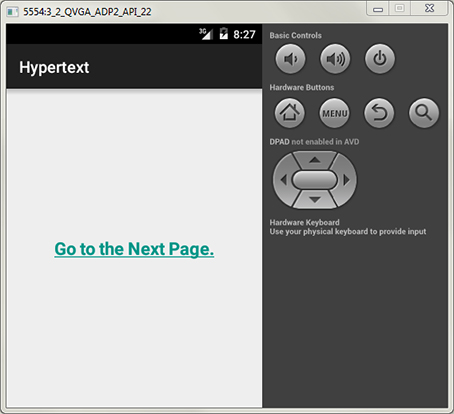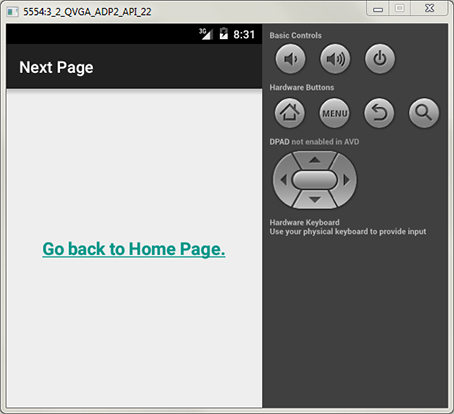
|
Next Page ⇒ ⇐ Home Page |

|
|
|
<?xml version="1.0" encoding="utf-8"?>
<RelativeLayout
xmlns:android = "http://schemas.android.com/apk/res/android"
xmlns:tools = "http://schemas.android.com/tools"
android:layout_width = "match_parent"
android:layout_height = "match_parent"
android:gravity = "center">
<TextView
android:layout_width = "wrap_content"
android:layout_height = "wrap_content"
android:textAppearance = "?android:attr/textAppearanceLarge"
android:text = "Go to the Next Page."
android:id = "@+id/txtMsg"
android:textStyle = "bold" />
</RelativeLayout>
|
|
|
<?xml version="1.0" encoding="utf-8"?>
<LinearLayout
xmlns:android = "http://schemas.android.com/apk/res/android"
android:layout_width = "match_parent"
android:layout_height = "match_parent"
android:orientation = "vertical"
android:gravity="center">
<TextView
android:layout_width = "wrap_content"
android:layout_height = "wrap_content"
android:textAppearance = "?android:attr/textAppearanceLarge"
android:text = "Go back to Home Page."
android:id = "@+id/tvView"
android:textStyle = "bold" />
</LinearLayout>
|
|
In order to keep my head above water (out of debt), I have had to get a second job. |